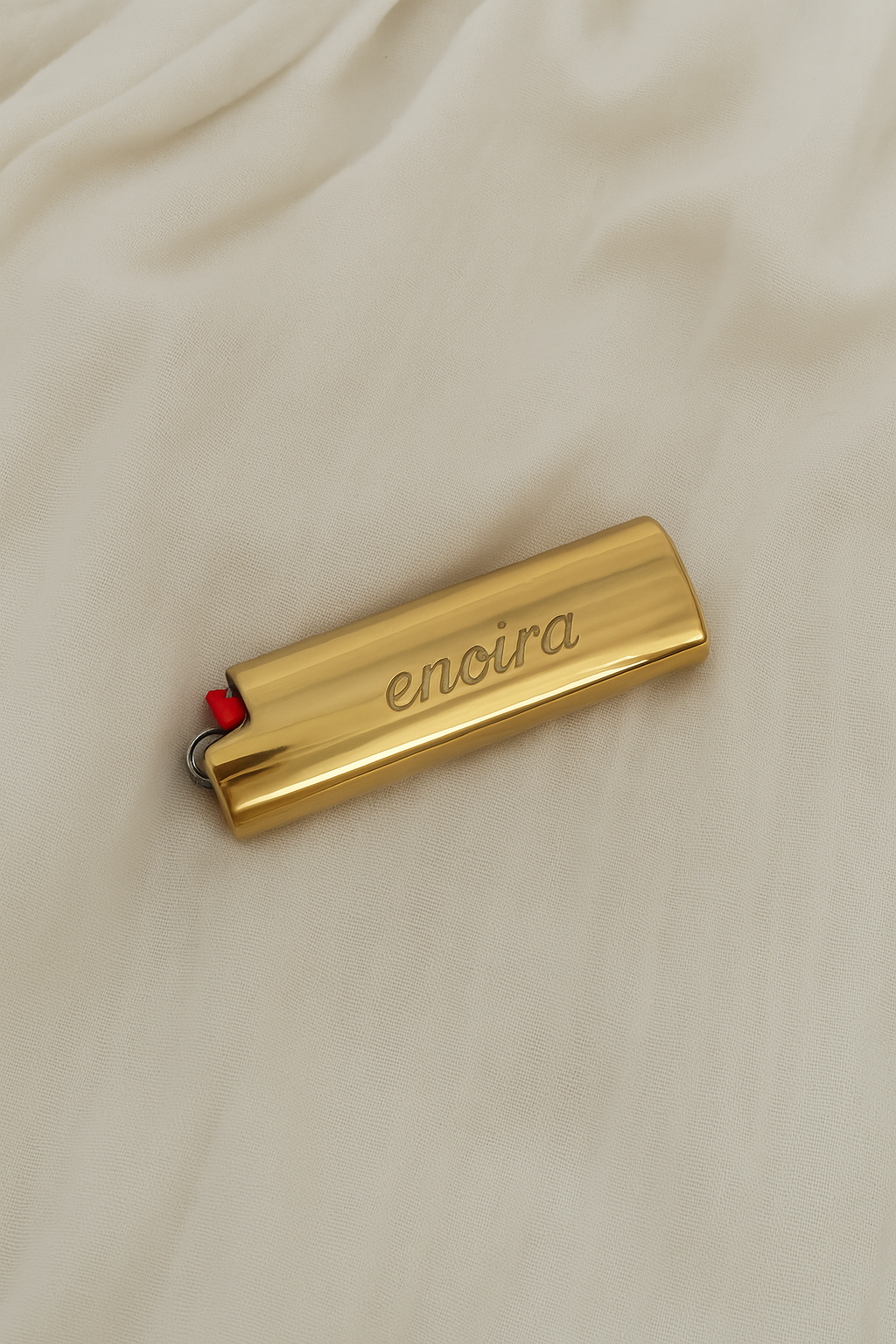
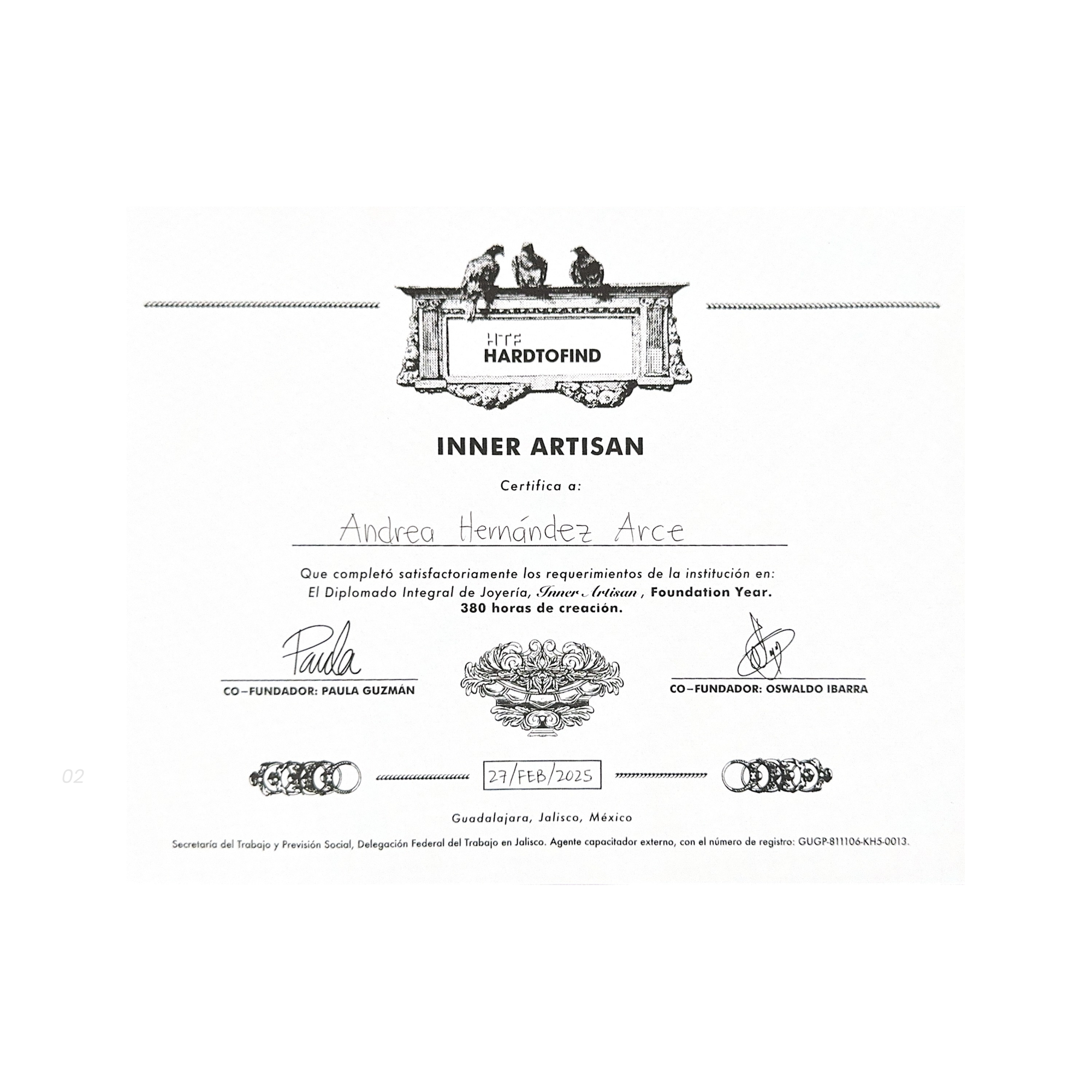
INNER ARTISAN
During my jewelry diploma, I developed a solid foundation in goldsmithing and fine jewelry design. I mastered essential techniques such as metal piercing, torch soldering, handmade silver chains, box clasp construction, wax modeling, metal granulation, and lost-wax casting. I created functional pieces like bezel-set rings, lockets, and even designed a piece for my first contemporary jewelry exhibition.
Beyond the technical skills, I gained valuable knowledge in gemology, jewelry history, supplier negotiation, and collection storytelling. I studied under Paula Guzmán, a renowned Mexican jewelry designer, who guided me in refining my creative process from concept development to final design. I also learned traditional hand-drawing techniques to accurately bring my designs to life.
This diploma not only equipped me with the technical skills to craft fine jewelry but also shaped my vision as a designer. It empowered me to create well-conceptualized, meaningful collections that reflect both craftsmanship and artistic intention.
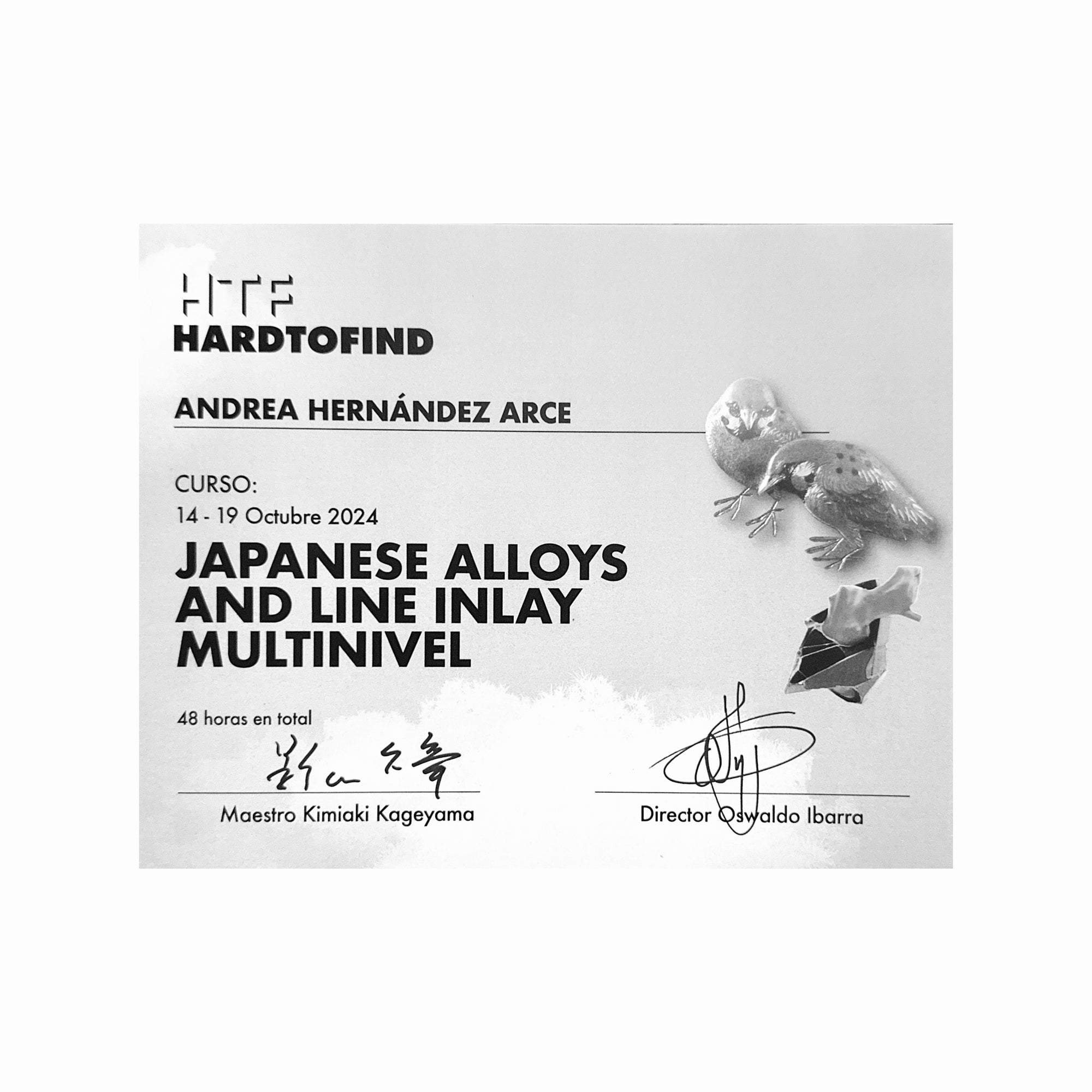
JAPANESE ALLOYS AND LINE INLAY MULTINIVEL
In Kimiaki Kagayama course, I learned to work with traditional Japanese alloys such as shakudo and shibuichi. The process began by melting and preparing these alloys, which are essential for the line inlay overlay technique. I carefully chiseled the metal surface and inlaid fine wires of gold, silver, and copper to create intricate designs. To finish, we applied ancient Japanese oxidation techniques, achieving rich colors and the signature deep black tone of shakudo. I also crafted a ring using a traditional Japanese casting process, gaining hands-on experience with these unique materials. This course deepened my appreciation for cultural craftsmanship and expanded my technical skills, allowing me to integrate traditional techniques into contemporary jewelry design.
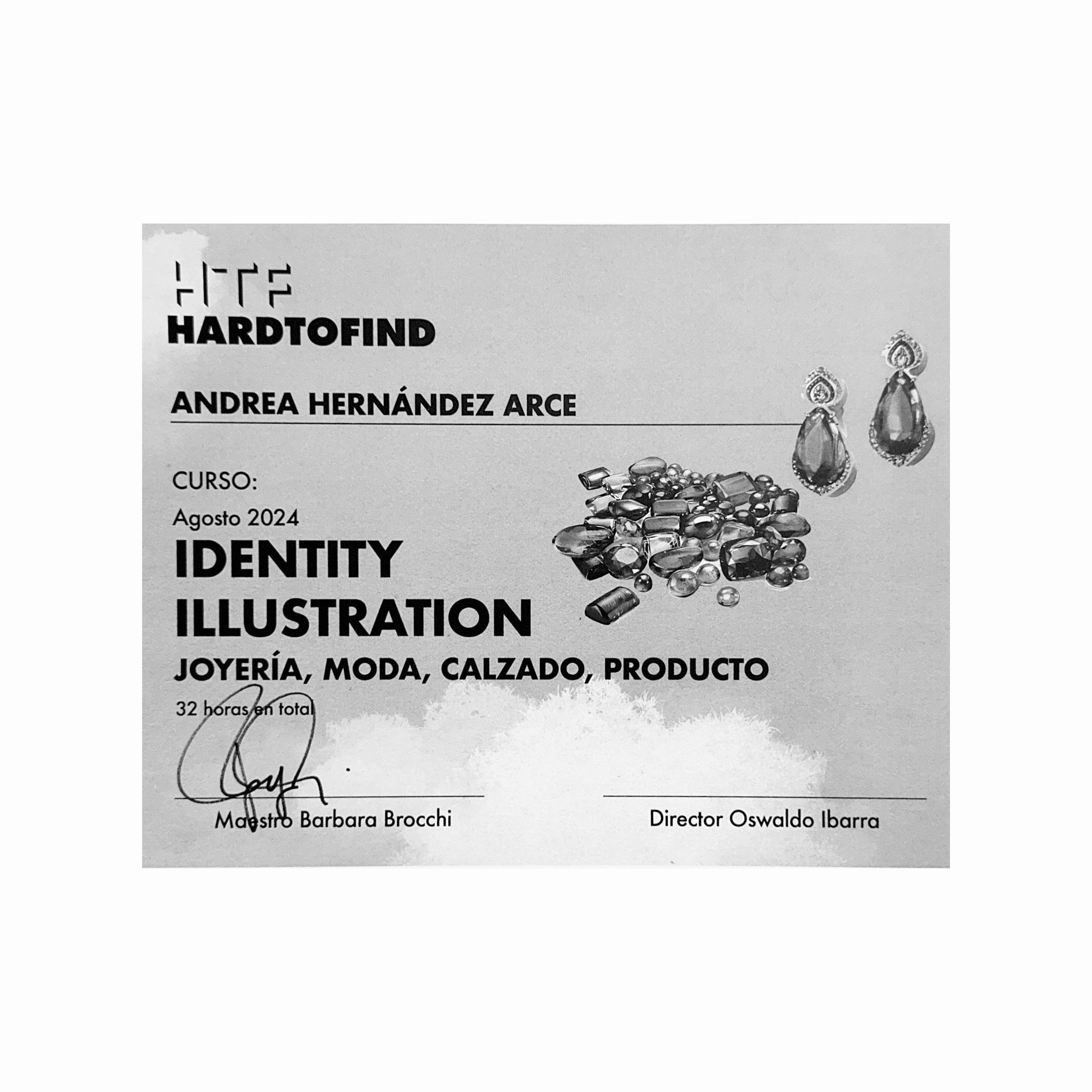
IDENTITY ILLUSTRATION
In Barbara Brocchi course, I enhanced my jewelry illustration skills both by hand and digitally. Having prior experience in drawing allowed me to progress quickly and complete the course with a fully rendered digital illustration. We focused on the behavior of light and shadow in jewelry, as well as accurately representing gemstones based on their cuts and colors. The course culminated in the creation of an illustration for a jewelry competition in Rome, which brought together all the techniques I had learned. This experience not only reinforced my foundation in illustration but also expanded my ability to capture light, depth, and realism in my designs—elevating the visual communication of my creative ideas.
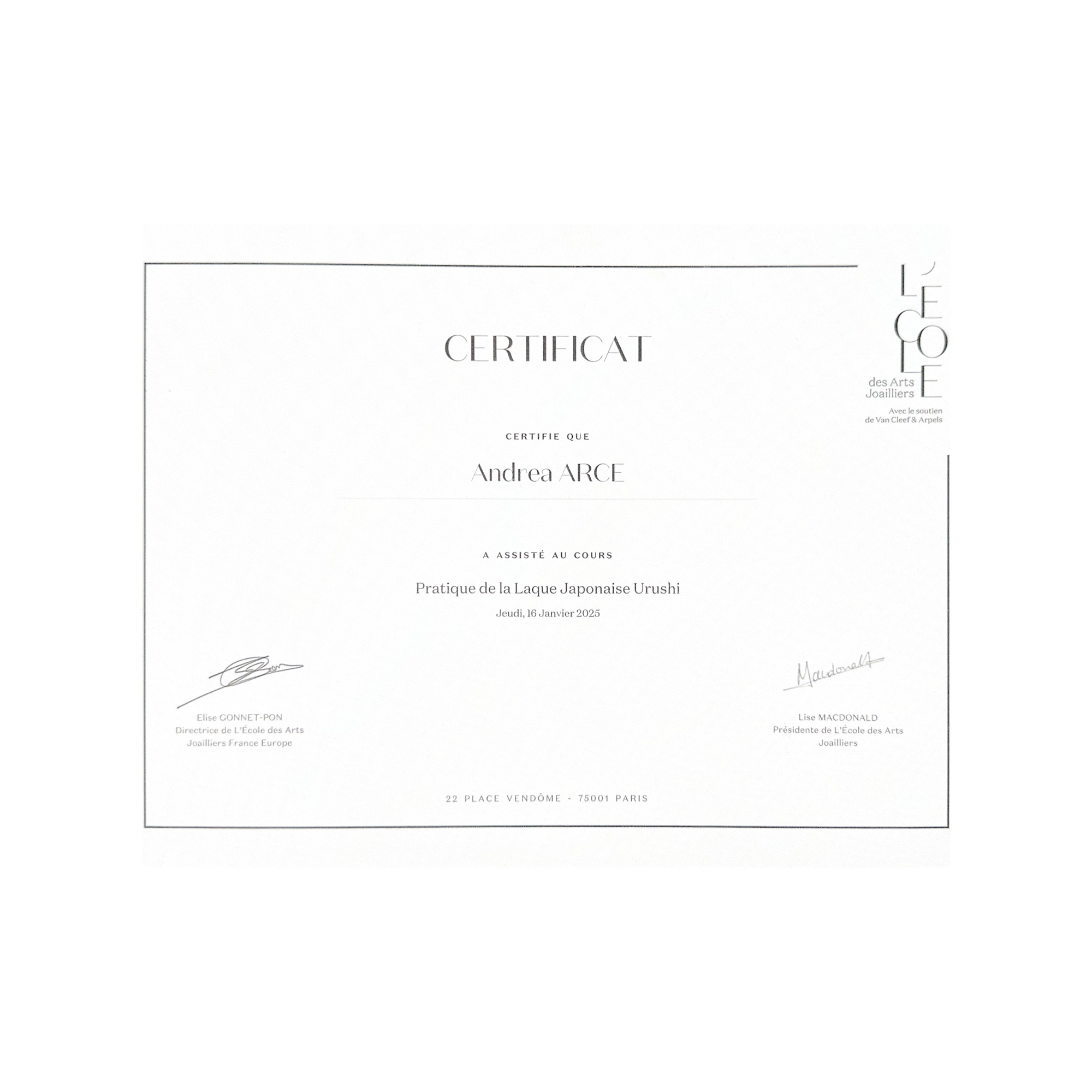
PRATIQUE DE LA LAQUE JAPONAISE URUSHI
This course introduced me to the refined and ancient technique of Japanese lacquer (urushi), a craft that requires meticulous precision and deep cultural understanding. I learned about the traditional tools, the multi-layered application process, and the symbolic meaning behind each finish. Exploring this art form allowed me to appreciate the value of patience, intentionality, and storytelling through materials. It expanded my creative language and inspired me to think differently about surface treatment and emotional expression in jewelry.
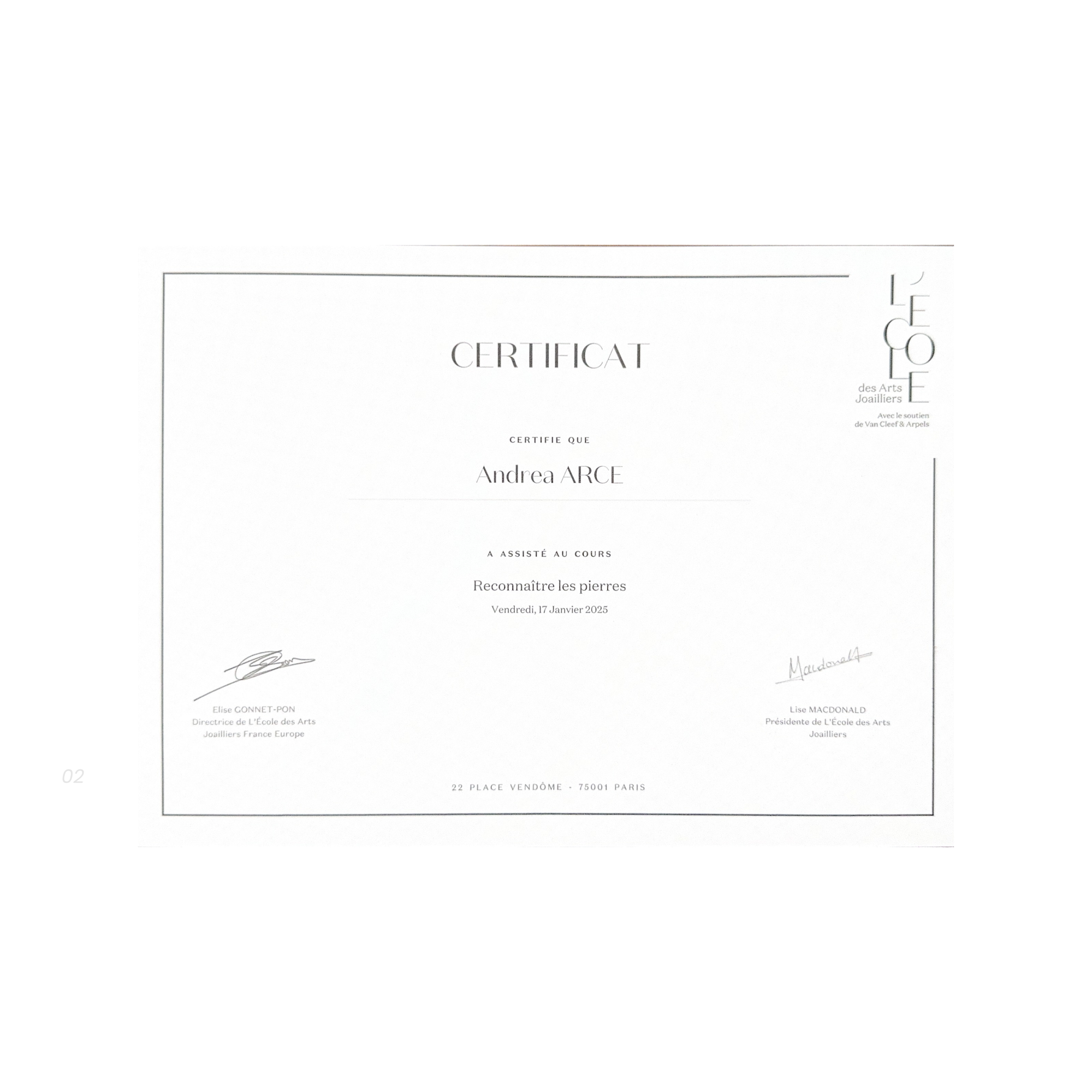
RECONNAÎTRE LES PIERRES
In this course, I explored the fascinating world of gem analysis and the technologies used to uncover the secrets hidden within each stone. I worked with instruments such as microscopes, polariscopes, and spectrometers, gaining insight into how professionals determine authenticity, origin, and quality. Though brief, the course provided a strong foundation in gemstone testing and gave me a clearer understanding of the science behind gemology. It strengthened my ability to evaluate materials and deepened my appreciation for the technical side of jewelry design.
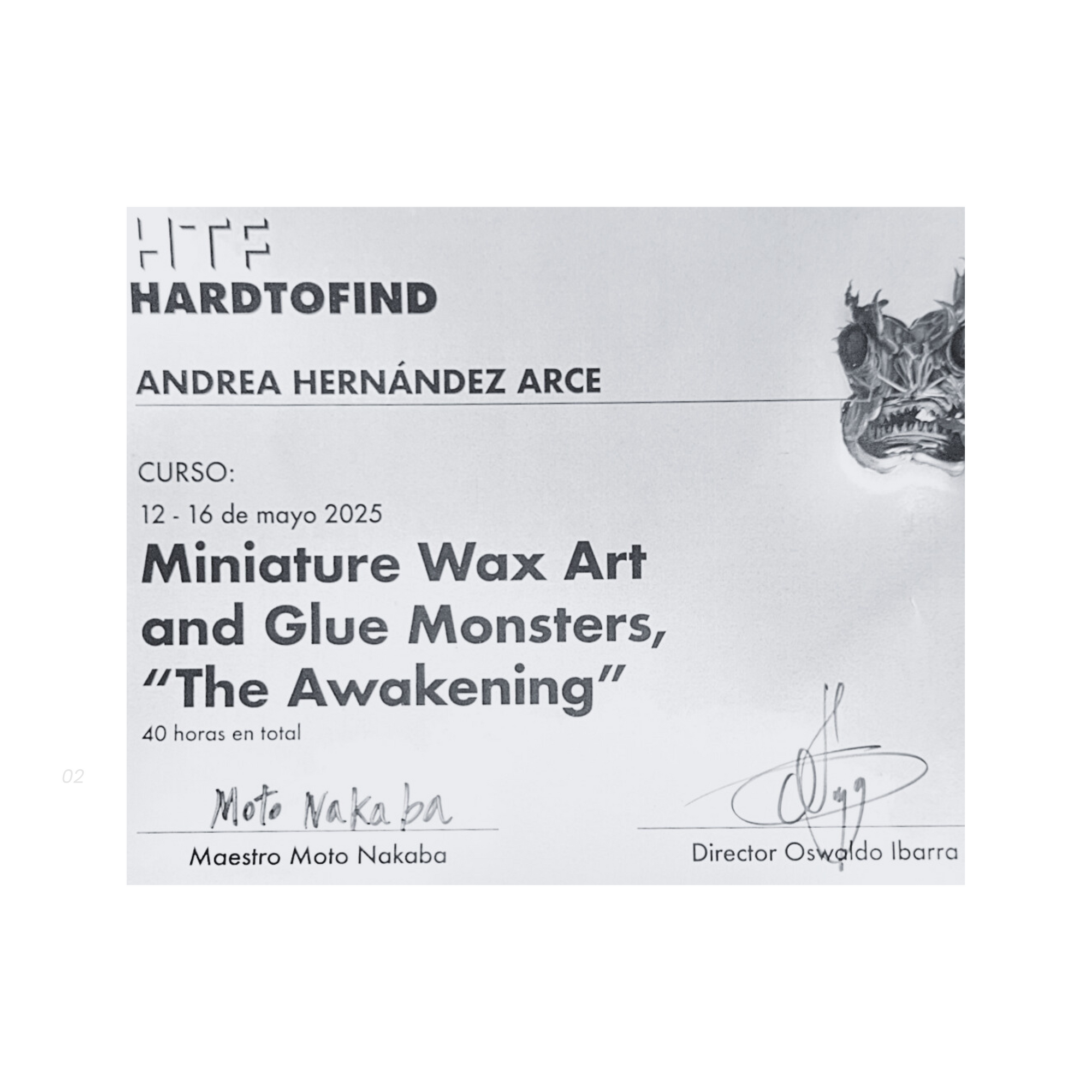
MINIATURE WAX ART AND GLUE MONSTERS
I took a course with Moto Nakaba where I learned to create micro wax sculptures, allowing me to achieve the most precise and exquisite details in a jewelry piece. This technique brings me closer to the essence of handmade jewelry — it’s a return to the art of modeling with intention and care.
The fine-point tool used in this process was invented by Moto Nakaba and his father, and it enables an unmatched level of detail. We also learned his signature technique of working with silicone figures — a method that completely blew my mind and helped me discover creative depths I didn’t know I had.
